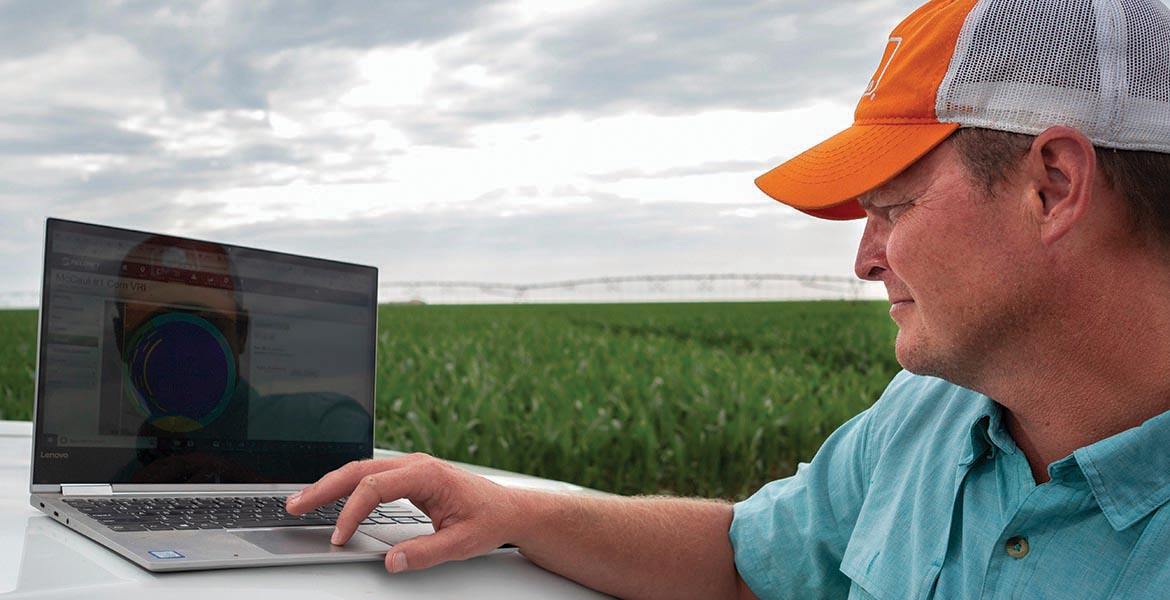
OSU Extension launches new website
Thursday, May 14, 2020
For over a century, OSU Extension has been the go-to source of information for farmers and ranchers, families and communities. With a storied history, the state agency now looks to the future and how it can better serve Oklahomans in the digital age.
With educators in all 77 Oklahoma counties, over 140,000 youth 4-H participants and 4,100-plus adult volunteers, OSU Extension serves hundreds of thousands of Oklahomans every year. In 2018, Extension had 1.7 million face-to-face contacts, via group and individual meetings.
"There has been a clearly expressed need from our constituents, those who do use it, that they want digital content."
That commitment to in-person service will continue, but OSU Extension now has a new and improved tool to share its vital trove of data and guidance. In January, OSU Extension launched its new centralized website, an easily accessible repository of fact sheets, interviews, videos and resources. With about 300 topic pages that bring together content about everything from beef cattle and wildfires to nutrition, OSU Extension has Oklahoma covered.
“Traffic on the Extension website has certainly gone up over time, and there has been a clearly expressed need from our constituents, those who do use it, that they want digital content,” said David Warren, senior director of digital strategies for the Division of Agricultural Sciences and Natural Resources. “They want content that works on their phones. They want access to services on their phones. We’ll be working to not only create content but also make program information, and in some cases interactive programs, available online.”
The push for the site overhaul was driven by analytics with input from research, surveys and focus groups. According to the Pew Research Center, nearly 100 percent of people under 30 use the internet daily, and two-thirds of people over 65 use the internet regularly.
OSU Extension Associate Vice President Damona Doye said the result is a more user-friendly site that effectively connects OSU’s academic resources with everyday Oklahomans. It’s an exciting development that Doye believes will help OSU Extension reach even more people.
“It is hard to easily explain the depth and breadth of the programming we offer because people are often familiar with only a small component,” she said. "This new site will help us spread awareness about the broad range of educational materials, programs and services we offer and deliver across the state. The new website won’t just be more user-friendly. It will also be more shareable and accessible. And it will point to events and personnel specific to counties.”
The Extension site is also home to online training sessions, such as food safety training through OSU’s Robert M. Kerr Food & Agricultural Products Center (FAPC).
“In this past year, we’ve started trying to take those trainings online, so that our
Extension educators are able to take training they need, but online training is available
for everybody,” said Mandy Gross, FAPC manager of communications services.
Whether it’s youth development through 4-H, master gardener, master cattleman, wellness,
food safety training, hazard analysis or the human sciences Extension program, the
array of programs and services have been brought together under one all-encompassing
digital roof: extension.okstate.edu.
“It’s not intended to replace the Extension offices, but to boost and better serve them,” Doye said. “It’s there to make sure our research-based factual information rises to the surface as quickly as possible, making it accessible to people and pointing them to our local Extension educators who can better translate it for them.”
Oklahoma Farm Bureau President Rodd Moesel said OSU Extension, whether online or in person, is vitally important for Oklahomans. As the president of American Plant Products and Services Inc., he said Extension is the most important source of objective advice in the state — and it’s available to everyone.
“Whether for a grower or a consumer, it provides the best science-based information that we can rely on, and it’s curated for our area. The right answer in New Hampshire or the state of Washington is not the same as the right answer in Oklahoma. The fact that we have researchers here that are addressing Oklahoma issues and Extension educators to move that information from the labs and field trials to share with us is absolutely huge. It’s the gold standard for horticulture and agriculture information in our state.”
